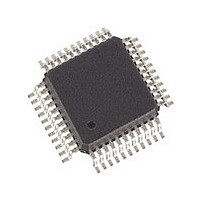SAF7129AH/V1,518 NXP Semiconductors, SAF7129AH/V1,518 Datasheet - Page 10

SAF7129AH/V1,518
Manufacturer Part Number
SAF7129AH/V1,518
Description
IC DIGITAL VIDEO ENCODER 44-QFP
Manufacturer
NXP Semiconductors
Type
Video Encoderr
Datasheet
1.SAF7129AHV1518.pdf
(56 pages)
Specifications of SAF7129AH/V1,518
Package / Case
44-QFP
Voltage - Supply, Analog
3.15 V ~ 3.45 V
Voltage - Supply, Digital
3 V ~ 3.6 V
Mounting Type
Surface Mount
Maximum Operating Temperature
+ 85 C
Minimum Operating Temperature
- 40 C
Mounting Style
SMD/SMT
Lead Free Status / RoHS Status
Lead free / RoHS Compliant
Applications
-
Lead Free Status / Rohs Status
Compliant
Other names
935274073518
SAF7129AH/V1-T
SAF7129AH/V1-T
SAF7129AH/V1-T
SAF7129AH/V1-T
Available stocks
Company
Part Number
Manufacturer
Quantity
Price
Company:
Part Number:
SAF7129AH/V1,518
Manufacturer:
Sigma Designs Inc
Quantity:
10 000
Philips Semiconductors
7.1.2
Basically, there are three independent fade factors
available, allowing for the equation:
Where x = 1, 2 or 3
Factor FADE1 is effective, when a colour in the data
stream fed to the MPEG port fader input is recognized as
being between KEY1L and KEY1U. That means, the
colour is not identified by a single numeric value, but an
upper and lower threshold in which a 24-bit YUV colour
space can be defined. FADE1 = 00H results in 100%
signal at the MPEG port fader input and 0% signal at the
fader Video port input. Variation of 63 steps is possible up
to FADE1 = 3FH, resulting in 0% signal at the MPEG port
fader input and 100% signal at the fader Video port input.
Factor FADE2 is effective, when a colour in the data
stream fed to the MPEG port fader input is recognized as
being between KEY2L and KEY2U. FADE2 is to be seen
in conjunction with a colour that is defined by a 24-bit
internal Colour Look-Up Table (CLUT). FADE2 = 00H
results in 100% of the internally defined LUT colour and
0% signal at the fader Video port input. Variation of
63 steps is possible up to FADE2 = 3FH, resulting in 0% of
the internally defined LUT colour and 100% signal at the
fader Video port input.
Finally, factor FADE3 is effective when a colour in the data
stream fed to the MPEG port fader input is recognized as
neither being between KEY1L and KEY1U nor being
between KEY2L and KEY2U. FADE3 = 00H results in
100% signal at the MPEG port fader input and 0% signal
at the fader Video port input. Variation of 63 steps is
possible up to FADE3 = 3FH, resulting in 0% signal at the
MPEG port fader input and 100% signal at the fader Video
port input.
Optionally, all upper and lower thresholds can be ignored,
enabling to fade signals only against the LUT colour.
If bit CFADM is set HIGH, all data at the MPEG port fader
are faded against the LUT colour, if bit CFADV is set
HIGH, all data at the Video port fader are faded against the
LUT colour.
2004 Mar 16
Output
Digital video encoder
=
P
ARAMETERS OF THE FADER
FADEx
ln1
+
1 FADEx
–
ln2
10
7.2
In the data manager, alternatively to the external video
data, a pre-defined colour look-up table located in this
block can be read out in a pre-defined sequence (8 steps
per active video line), achieving a colour bar test pattern
generator without the need for an external data source.
7.3
7.3.1
The encoder generates out of Y, U and V baseband
signals luminance and colour subcarrier output signals,
suitable for use as CVBS or separate Y and C signals.
Luminance is modified in gain and in offset (latter
programmable in a certain range to enable different black
level set-ups). A blanking level can be set after insertion of
a fixed synchronization pulse tip level in accordance with
standard composite synchronization schemes.
In order to enable easy analog post filtering, luminance is
interpolated from a 13.5 MHz data rate to a 27 MHz data
rate, providing luminance in 10-bit resolution. The transfer
characteristics of the luminance interpolation filter are
illustrated in Figs 10 and 11. Appropriate transients at
start/end of active video and for synchronization pulses
are ensured.
Chrominance is modified in gain (programmable
separately for U and V), standard dependent burst is
inserted, before baseband colour signals are interpolated
from a 6.75 MHz data rate to a 27 MHz data rate. One of
the interpolation stages can be bypassed, thus providing a
higher colour bandwidth, which can be made use of for
Y and C output. The transfer characteristics of the
chrominance interpolation filter are illustrated in
Figs 8 and 9.
The amplitude, beginning and ending of the inserted burst,
is programmable in a certain range that is suitable for
standard signals and for special effects. Behind the
succeeding quadrature modulator, colour in a 10-bit
resolution is provided on the subcarrier.
The numeric ratio between Y and C outputs is in
accordance with the respective standards.
Data manager
Encoder
V
IDEO PATH
SAF7129AH
Product specification














